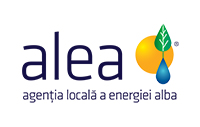| 7.077 (2021) | |
| 86 km2 | |
| 2008: 36.148t | |
| 2030: 16.267t |
Câmpeni is located in Alba County, which belongs to the central part of Romania’s ‘Centru’ Development Region. The municipality spans an area of 86 km2 and is intersected by the Arieș River. It comprises 22 settlements, with a total population of 7,077 inhabitants according to the 2021 census. This results in a population density of 82 inhabitants per km2.
By becoming a part of the Covenant of Mayors, Câmpeni has expressed its interest in contributing to climate change mitigation and adaptation. Accordingly, the Municipality of Câmpeni has set a target of reducing CO2 emissions by at least 40% by 2030, while also enhancing its resilience to the negative effects of climate change. To achieve these goals, the municipality will promote the rational use and management of energy consumption at the local level. Additionally, the municipality recognizes the importance of energy efficiency and intends to support and implement measures that encourage the rational use of energy and adaptation to climate change.
The residential buildings sector accounts for the largest share of total CO2 emissions in the municipal area, contributing 79.33% of the emissions. It is followed by the transport sector, which contributes 10.91% to the total emissions. Emissions from the public lighting sector are almost negligible, representing only 0.34% of the total. In the reference year of 2008, the observed sectors emitted a total of 36,148 tCO2.
The implementation of mitigation measures outlined in the SECAP will bring multiple benefits to the municipality. These measures will strengthen the municipality’s capacity to address the harmful effects of climate change and capitalize on opportunities for economic and social progress. Furthermore, they will facilitate the adoption of new financial mechanisms to implement energy efficiency measures and promote the use of RES, ultimately improving the quality of life for all residents. A total of 54 mitigation measures have been defined with the aim of reducing CO2 emissions by 40% by 2030. These measures primarily focus on energy efficiency and the use of RES in the building, transport, and public lighting sectors within the municipal area.”
 The SECAP was created by ALEA and supported by CEESEU project.
The SECAP was created by ALEA and supported by CEESEU project.
The entire document is available on the link below in Romanian language.
| The SECAP was implemented with the support of the CEESEU project. The CEESEU project received funding from the European Union’s Horizon 2020 research and innovation programme under grant agreement GA: 892270. Disclaimer: The author of this content is solely responsible for its content, which does not necessarily reflect the views of the European Union, and neither EASME nor the European Commission is responsible for any use that may be made of this content. |
SECAP-EU
| The SECAP was implemented with the support of the CEESEU project. The CEESEU project received funding from the European Union’s Horizon 2020 research and innovation programme under grant agreement GA: 892270. Disclaimer: The author of this content is solely responsible for its content, which does not necessarily reflect the views of the European Union, and neither EASME nor the European Commission is responsible for any use that may be made of this content. |
